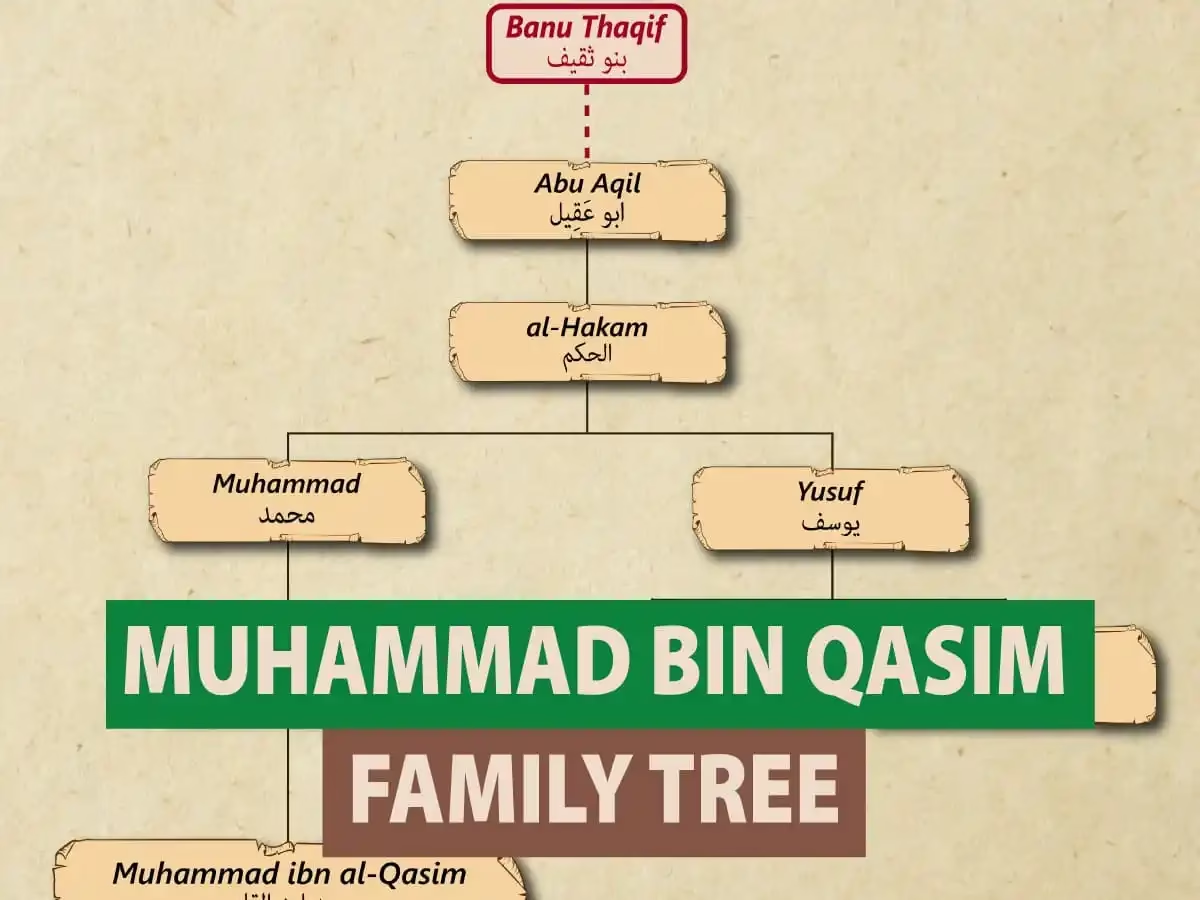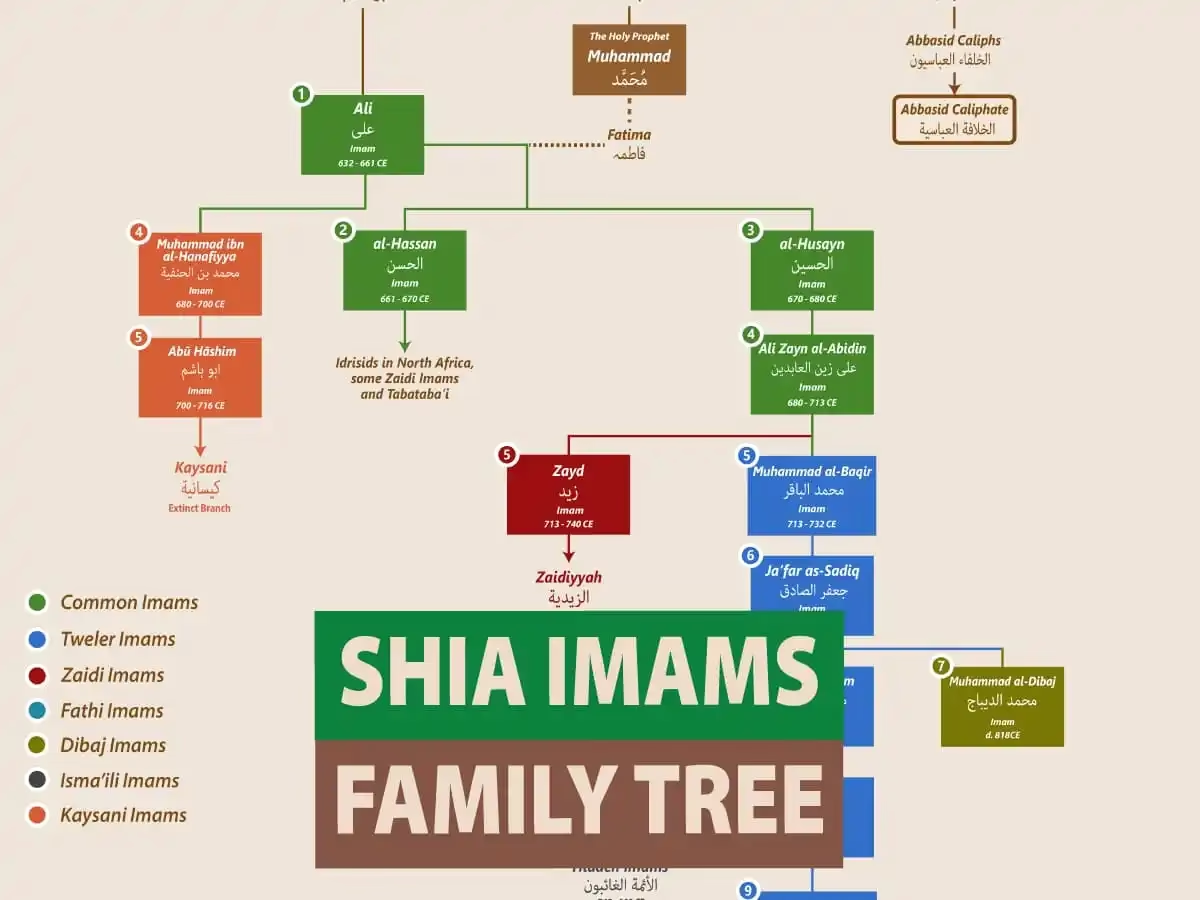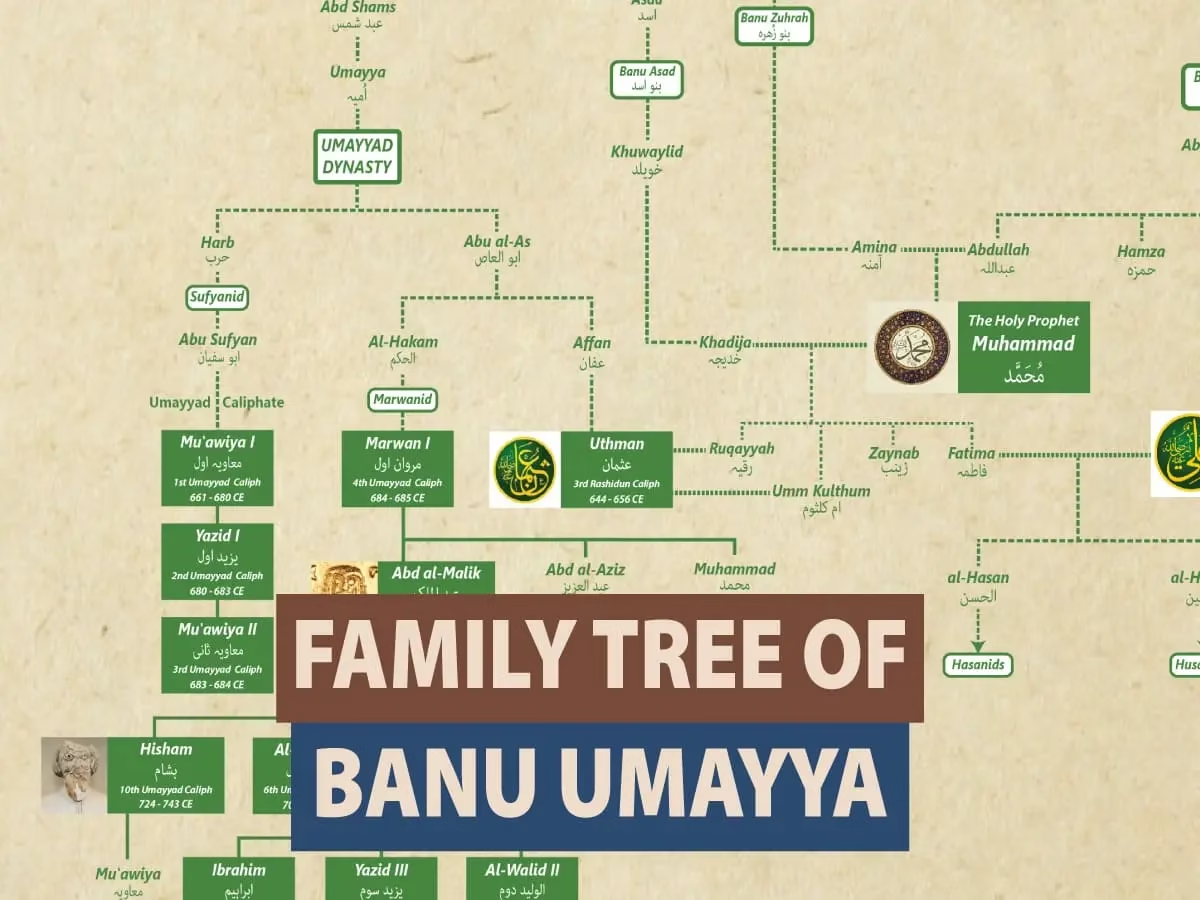The Family Tree of Banu Hashim, a prominent branch of the Quraysh tribe and the family lineage of the Prophet Muhammad (PBUH). Banu Hashim holds a central place in Islamic history due to its significant contributions to the religious, political, and cultural development of the Muslim world.

Overview of Banu Hashim
- Banu Hashim derives its name from Hashim ibn Abd Manaf, the great-grandfather of the Prophet Muhammad (PBUH). He was a respected figure in Mecca known for his generosity and leadership.
- This family lineage was distinguished for its noble qualities, such as hospitality, protection of pilgrims, and custodianship of the Kaaba.
The Lineage of Prophet Muhammad (PBUH)
- The family tree highlights the direct lineage of the Prophet Muhammad (PBUH) through Abd al-Muttalib (his grandfather) and Abdullah (his father).
- Fatimah, the daughter of the Prophet (PBUH) , married Ali ibn Abi Talib, the Prophet’s cousin and the fourth Caliph of Islam. This marriage united two key figures in Islamic history and led to a lineage that holds great significance for both Sunni and Shia traditions.
Prominent Descendants
- The tree showcases two critical branches of descendants from Ali and Fatimah:
- Al-Hasan: Known as the second Imam in Shia Islam and a key figure in early Islamic history.
- Al-Husayn: The third Imam in Shia Islam and the central figure in the tragic Battle of Karbala. His martyrdom in 680 CE symbolized the struggle against tyranny and remains a defining moment in Islamic history.
See Also: Shia Imams Family Tree
The Hashemite Line
Another notable branch is the Hashemite Dynasty, which currently rules Jordan. The Hashemites trace their lineage to Idris I, the founder of the Idrisid dynasty in Morocco, and through him to the Prophet Muhammad (PBUH).
Abbasid and Fatimid Dynasties
- The descendants of Banu Hashim played a pivotal role in the establishment of major Islamic dynasties:
- Abbasid Dynasty: Descended from Al-Abbas ibn Abd al-Muttalib, the Prophet’s uncle. The Abbasids overthrew the Umayyad Dynasty in 750 CE and established a vast empire that became a center of knowledge and culture.
- Fatimid Dynasty: Descended from Isma’il ibn Jafar al-Sadiq, a member of the Imamate line. The Fatimids ruled parts of North Africa, Egypt, and the Levant, and their caliphate was a significant force in Islamic history.
See Also: Banu Umayya (Umayyad Dynasty) Family Tree: Quraysh to Marwan II
Religious and Historical Importance
The Banu Hashim family tree is not just a genealogical record but a reflection of Islamic political and spiritual history. It highlights the role of:
- Imams in Shia Islam, who are considered spiritual leaders and guides.
- Caliphs and rulers who influenced the Islamic world through governance and intellectual contributions.
See Also: Family Tree of Prophet Muhammad (PBUH): Quraysh to Imam Mahdi



